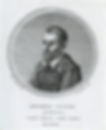Today we're going to enter a calm, meditative, certainly beautiful, and some might even say "dark" space. This post will include a discussion of one of the most famous and best-loved pieces of European music, but to put it in context we're going to explore a part of the world of sacred music which is not well-understood.
To get the context as complete as possible we go way back to around 1000 BC and to the second king of Israel, King David. According to the Biblical story (2 Samuel, chapters 11 and 12), David committed adultery with a woman called Bathsheba who was married to a man called Uriah. On discovering he had made Bathsheba pregnant, David tried to cover up the transgression, firstly by recalling Uriah from war to have him sleep with her and, when this was unsuccessful, arranging to have Uriah killed in battle.
On being confronted with the nature and consequences of his sin by the prophet Nathan, the tradition is that David poured out his grief and penitence before God in one of the psalms. It's known as Psalm 51 in Hebrew and Protestant Bibles (which follow the traditional Hebrew or Masoretic numbering), and as Psalm 50 in Catholic and Orthodox Bibles (which usually use the Greek Septuagint numbering).

In the Christian tradition this psalm - beginning Miserere mei, Deus or "Have mercy on me, oh God" - is one of the paramount expressions of penitence. It's one of the most frequently used psalms in the Byzantine rite of the Eastern Orthodox churches and in the Coptic Church's book of hours it is recited at every office throughout the day as an act of repentance. In the Anglican prayer book, this psalm is associated with Ash Wednesday.
Germane to the music we'll focus on here, the Miserere is used in a number of contexts in Catholic rites, but most famously in the service known as Tenebrae. Over the centuries the celebration of Tenebrae has changed, but originally it was the name given to the first two offices of the day, Matins and Lauds, as celebrated at the end of Holy Week on Maundy Thursday, Good Friday and Holy Saturday.
The word tenebrae means "darkness" and the rite was marked by the gradual extinguishing, one by one, of fifteen candles during the course of the service, until the final section was celebrated in complete darkness. The Miserere psalm is sung at the end of the service; this is one of its Gregorian chant settings. [listen]

A number of composers have set the Miserere to music, either separately or as part of larger settings of the Tenebrae texts. The most famous is without doubt that by the Italian composer Gregorio Allegri, composed around 1638. We'll talk about the Allegri Miserere later. It's quite a story.
Major composers were setting the Miserere long before Allegri. Around 1503, Josquin Desprez set the psalm to music for the Duke of Ferrara. It is a sparse, almost severe, yet very beautiful through-composed setting of the psalm for five part voices. By "through-composed" I mean the composer has set the entire text to music and not alternated set verses with verses sung to Gregorian chant. Josquin's setting was enormously influential, inspiring other composers throughout the Renaissance to set the penitential psalms in a sparer, more direct manner.

The Miserere is nineteen verses long, so the musical settings are rather long. Josquin's takes about a quarter of an hour. It incorporates a repeated phrase on the opening words - based on the Gregorian chant - in one of the tenor parts which is heard nineteen times, once after each verse. [listen]
The setting of the Miserere - either as part of seven so-called "penitential" psalms or as part of the service of Tenebrae - was undertaken by some of the most important names in 16th century music. In Munich in 1584, Lassus published his set of penitential psalms and the Miserere is set on a lavish and expansive scale, lasting some 25 minutes in performance. Its warm, rich sounds right from the start invite the listener into an aural embrace. [listen]
In 1585, the year after Lassus's psalms were published in Munich, the Spanish composer Tomás Luis de Victoria had published in Rome a massive collection of music for Holy Week. Called in Latin the Officium Hebdomadae Sanctae, this includes music required for services from Palm Sunday, Maundy Thursday, Good Friday and Holy Saturday, and it includes a setting of the Miserere. Victoria's setting is an example of what was known in Italy as "falsobordone" singing. This style of singing developed in southern Europe around 1480 and remained popular until the 18th century. It involved a recitation of chords, often based on a pre-existing Gregorian chant melody, which resolved into a cadence. This style of singing was probably improvised at first but later written out in settings like Victoria's. In this setting we hear another common practice of the time: the psalm is sung with the verses alternating in falsobordone or Gregorian chant. [listen]
At around the same time, not far away in Venice, the uncle and nephew team of Andrea and Giovanni Gabrieli were creating sumptuous sonic wonders to aid the devotions of the Doge in St Mark's basilica. (See an earlier post in this blog for a discussion of music written for this magnificent building.) Both composed settings of the Miserere, most likely for Holy Week, and even though a discreet organ accompaniment was used, there is none of the lavish instrumental sound we tend to associate with the name Gabrieli.

Andrea Gabrieli's Miserere was published in a set of the seven penintential psalms not long before his death in 1585. It's scored for six part voices with continuo, and the voices would most likely have been doubled by instruments, as was a common practice in Venice at the time. The setting is through-composed and not in falsobordone, falling into four discreet sections. (Sadly, I can’t find a recording online to link here.)
Andrea Gabrieli's nephew, Giovanni, was one of the most famous musicians of his age. He composed two settings of the Miserere, one for four voices, the other for six. This is the six-part setting. [listen]
Roughly contemporary with Giovanni Gabrieli was the truly individual and unique Carlo Gesualdo. His music for Holy Week was published in 1611, and while the Miserere setting it contains avoids some of the more outrageous discords which made his madrigals famous (or even infamous), its falsobordone-and-chant setting is still confronting in its aural expressionism. And it’s also very beautiful. [listen]

In the later 17th century there was a flowering of elaborate church music with instruments in France. Marc-Antoine Charpentier (who was born in 1643) wrote a great deal of music, including much for Tenebrae. His setting of the Miserere was probably written in the 1670s and it's scored for two voices, two recorders and continuo. This creates a very different sound: intimate but more elaborate, but no less devotional for that. It's an extended setting, lasting around 20 minutes. [listen]
Charpentier's slightly older, much more famous and much, much more powerful contemporary Jean Baptiste Lully wrote a large scale setting of the Miserere shortly before Charpentier's intimate version. Lully's setting is for two choirs (one large, one small) solo voices and orchestra. Why Lully wrote the piece is completely unknown, but it's a substantial work which bears testimony to Lully's skill as a theatrical composer. [listen]

At the centre of the Catholic world was, of course, Rome, and at the centre of Rome was the Sistine Chapel, the Pope's private chapel. In the Renaissance, the choir of the Sistine chapel consisted of some of Italy's finest singers and its music was composed by some of Europe's finest composers. Holy Week was of course celebrated with the finest music and the Miserere became a focus of the Tenebrae ceremonies.
A pair of manuscripts in the Vatican preserve twelve Miserere settings by a number of composers which were used in Tenebrae services. These are all falsobordone-and-chant settings, the first of which is by Fabrizio Dentice, who died around 1581. This performance of the opening of Dentice's Miserere reveals an important detail of performance practice in the Sistine Chapel at the time, namely florid improvisation and embellishment. [listen]
The singers in the Sistine Chapel choir, especially the sopranos (who were originally falsettists but later castrati - they were all male, anyway), were renowned as not only great singers but also highly skilled in improvisation and the ability to sing very floridly. The Vatican manuscript which contains these settings of the Miserere gives no indication of the way the music was actually performed, only the raw text of the music. The collection includes a setting by Palestrina as well, but the most famous of them all is the one purporting to be by Gregorio Allegri (c. 1582-1652).

I say "purporting" because there hangs about this famous piece a great deal of mystery and - it must be said - myth. Even now the full story is hard to unravel but here goes.
That Allegri composed a setting of the Miserere around 1638 is not in doubt. That it was sung in the Sistine Chapel is also not in doubt. And it is definitely true that the piece attracted a great deal of mystique when at some stage during the 17th century it was forbidden to copy the music or perform it elsewhere, on threat of excommunication.
The Vatican did authorise three copies to be distributed before the young Mozart famously wrote the piece down after hearing it in Rome in 1770. These copies went to the Holy Roman Emperor Leopold I, to the King of Portugal, and to the composer and theoretician Padre Martini. Yet the version that was sent to them is now believed to bear little relation to the way the work was actually performed in the Sistine Chapel. For a start it’s a conflation of a setting of the Miserere by two composers, Allegri and Tommaso Bai. Bai's setting dated from 1714 and the Sistine Chapel's choir in the 18th century was nowhere near as skilled or virtuosic as it had been in Allegri's time.
So the work as we now have it and as it is now known and loved around the world is far from being the Miserere that Allegri would have recognised. The tragedy is not only is Allegri's original version long lost, but the manner of ornamented and embellished performance is also long lost.
The well-known version of Allegri's Miserere is scored for two ensembles of singers, one in five parts and the other in four. These alternate, falsobordone style, with the Gregorian chant in time-honoured practice. But the music is repeated, unaltered, for each verse sung by the relevant group, including the infamous high C sung by the top line of the smaller ensemble. What I’ve linked to here is one of the most beautiful performances of the traditional version I’ve ever heard. [listen]
It's now widely believed that Allegri's original was far more inventive, far more interesting and - most importantly - far more florid and virtuosic. Allegri's setting would most definitely have been performed in accordance with then-current musical styles - this was the age of Monteverdi and Cavalli, after all, not Palestrina or Lassus - and the version handed down to us is probably a petrified shadow of the original. The famous high C is, in all probability, a transcription of one singer's improvisation at one point which has become forever attached to the music in a way the composer never intended.
What you're about to hear is an attempt to recreate Allegri's lost original by the musicologist Jean Lionnet, based on what is known about the origins of the piece, the historical sources, and florid performance practice in Rome in the 17th century. It is a reconstruction, of course, but it is a fascinating illustration of just how far removed the well-known version is from what may have been originally performed; a fascinating example of "what if". [listen]
Barring some amazing discovery in an attic or an archive, the Miserere of Gregorio Allegri is a work we'll never know. The well-known version is without doubt beautiful, but it's a shadow of what it probably was. Lionnet's conjectured reconstruction is stunning and will no doubt shock people who thought they knew what they were in for, but it makes you think...
One can only imagine what King David would have made of it all.
This article is based on a Keys To Music program first aired on ABC Classic FM (now ABC Classic) in April, 2010.
